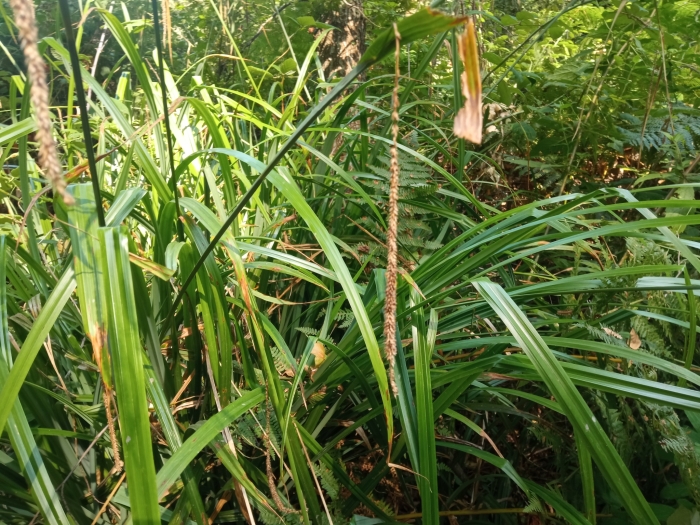Pendulous Sedge
(Carex pendula)
Pendulous Sedge (Carex pendula)
/
/

© Josep Gesti
CC BY-SA 4.0
Image By:
© Josep Gesti
Recorded By:
Copyright:
CC BY-SA 4.0
Copyright Notice:
Photo by: © Josep Gesti | License Type: CC BY-SA 4.0 | License URL: http://creativecommons.org/licenses/by-sa/4.0/ | Uploader: josepgesti | Publisher: iNaturalist |
























Estimated Native Range
Summary
Carex pendula, commonly known as pendulous sedge, is a perennial herbaceous plant native to a variety of habitats including deciduous woodlands, damp meadows, riverbanks, and moist, shaded areas across Europe, as well as parts of northwest Africa and the Middle East. It can grow in dense clumps up to 6 feet tall and is characterized by its arching, pendulous flower spikes that appear from May to July. The flowers are greenish-brown and not particularly showy, but they add a unique texture to the landscape. The foliage is a deep green, and the plant forms a cascading habit that can be quite striking.
Pendulous sedge is valued for its ability to thrive in damp, shady conditions where other plants may struggle. It is often used in naturalistic plantings, around ponds and water features, and for erosion control on stream banks. Carex pendula prefers heavy clay soils but can adapt to a range of soil types as long as moisture is consistent. It requires part shade to full shade and can be propagated by division. While it is low-maintenance, it can become invasive outside its native range due to its vigorous growth and self-seeding habit, so gardeners should be cautious and check local guidelines before planting.CC BY-SA 4.0
Pendulous sedge is valued for its ability to thrive in damp, shady conditions where other plants may struggle. It is often used in naturalistic plantings, around ponds and water features, and for erosion control on stream banks. Carex pendula prefers heavy clay soils but can adapt to a range of soil types as long as moisture is consistent. It requires part shade to full shade and can be propagated by division. While it is low-maintenance, it can become invasive outside its native range due to its vigorous growth and self-seeding habit, so gardeners should be cautious and check local guidelines before planting.CC BY-SA 4.0
Plant Description
- Plant Type: Grass
- Height: 4-6 feet
- Width: 3-5 feet
- Growth Rate: Moderate
- Flower Color: N/A
- Flowering Season: Summer
- Leaf Retention: Evergreen
Growth Requirements
- Sun: Full Sun, Part Shade
- Water: Medium
- Drainage: Medium
Common Uses
Bird Garden, Erosion Control, Low Maintenance, Water Garden
Natural Habitat
native to a variety of habitats including deciduous woodlands, damp meadows, riverbanks, and moist, shaded areas across Europe, as well as parts of northwest Africa and the Middle East
Other Names
Common Names: Hanging Sedge , Drooping Sedge , Weeping Sedge
Scientific Names: Carex pendula , Carex maxima , Carex myosuroides , Carex pendula f. pallida , Carex pendula var. myosuroides , Carex tenuirostrata , Manochlaenia pendula , Trasus pendulus , Trasus pendulus var. androgynus
GBIF Accepted Name: